 W
WThe Aerospace Museum of California is a private non-profit aviation museum located in North Highlands, California, outside of Sacramento, California, on the grounds of the former McClellan Air Force Base. The museum has a 4-acre outdoor Air Park, a large indoor exhibit space, a classroom, theater, conference room, and gift shop. Featured displays include: authentic military and civilian aircraft, rockets, historic World War II artifacts, objects from the Apollo missions, and an extensive collection of piston and jet engines. The museum preserves the history of the former base while supporting current STEM educational standards through its programming and exhibits.
 W
WThe Air Force Test Center (AFTC) is a development and test organization of the United States Air Force. It conducts research, development, test, and evaluation of aerospace systems from concept to deployment. It has test flown every aircraft in the Army Air Force's and the Air Force's inventory since World War II. The center employs nearly 13,000 people, and controls the second largest base in the Air Force.
 W
WB-39 was a Project 641 (Foxtrot-class) diesel-electric attack submarine of the Soviet Navy. The "B" in her designation stands for большая —Foxtrots were the Soviet Navy's largest non-nuclear submarines. B-39 is now a museum ship on display at the Maritime Museum of San Diego, California, United States.
 W
WB-427 was a Project 641 (Foxtrot-class) diesel-electric attack submarine of the Soviet Navy. The "B" in her designation stands for большая. Commissioned in 1971, the submarine operated with the Russian Pacific Fleet until decommissioning in 1994. The boat was sold to a group of Australian businessmen, who converted her into a museum vessel, which was placed on display at the Australian National Maritime Museum from 1995 until 1998, then at Long Beach, California in 1998.
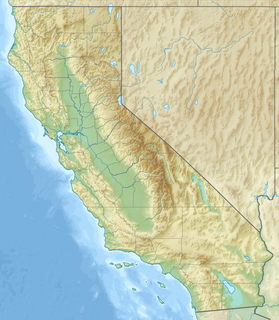 W
WCastle Air Museum is a military aviation museum located in Atwater, California, United States adjacent to Castle Airport, a former United States Air Force Strategic Air Command base which was closed in 1995, after the end of the Cold War. It is one of the largest aerospace museums displaying vintage aircraft in the western United States.
 W
WEagle Field is a privately owned, private use airport in Fresno County, California, United States. It is located seven nautical miles southwest of the central business district of Dos Palos, a city in neighboring Merced County.
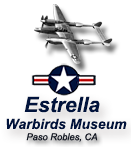 W
WThe Estrella Warbirds Museum is an aviation museum dedicated to the restoration and preservation of military aircraft, vehicles, and memorabilia. The museum is located at Paso Robles Municipal Airport in central California and is named after Estrella Army Airfield. In July, 2009, the museum opened an automobile display featuring classic racing cars, The Woodland Auto Display.
 W
WThe Flying Leatherneck Aviation Museum is a United States Marine Corps command museum at Marine Corps Air Station Miramar, San Diego, California. The museum contains exhibits and artifacts relating to the history and legacy of United States Marine Corps Aviation. The outdoor exhibits include 31 historical aircraft, multiple military vehicles and equipment. Indoor exhibits feature photographs, artifacts and artwork from the early days of aviation to the present.
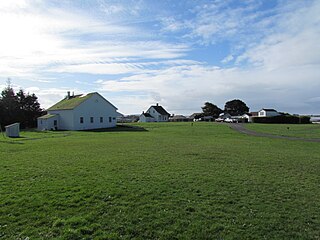 W
WFort Humboldt State Historic Park is a California state park, located in Eureka, California, United States. Displays interpret the former U.S. Army fort, which was staffed from 1853–1870, the interactions between European Americans and Native Americans in roughly the same period, and both logging equipment and local narrow gauge railroad history of the region. Within the collection, there are trains, logging equipment, including a fully functional Steam Donkey engine, and an authentic Native American dug-out canoe. The Fort overlooks Humboldt Bay from a commanding position atop a bluff. The North Coast regional headquarters of the California State Parks system is located onsite.
 W
WFort MacArthur is a former United States Army installation in San Pedro, Los Angeles, California. A small section remains in military use by the United States Air Force as a housing and administrative annex of Los Angeles Air Force Base. The fort is named after Lieutenant General Arthur MacArthur. His son, Douglas MacArthur, would later command American forces in the Pacific during World War II.
 W
WFort Point is a masonry seacoast fortification located on the southern side of the Golden Gate at the entrance to San Francisco Bay. It is also the geographic name of the promontory upon which the fort and the southern approach of the Golden Gate Bridge were constructed.
 W
WFort Tejon in California is a former United States Army outpost which was intermittently active from June 24, 1854, until September 11, 1864. It is located in the Grapevine Canyon between the San Emigdio Mountains and Tehachapi Mountains. It is in the area of Tejon Pass along Interstate 5 in Kern County, California, the main route through the mountain ranges separating the Central Valley from the Los Angeles Basin and Southern California. The fort's location protected the San Joaquin Valley from the south and west.
 W
WThe General George S. Patton Memorial Museum, in Chiriaco Summit, California, is a museum erected in tribute to General George S. Patton on the site of the entrance of Camp Young, part of the Desert Training Center of World War II.
 W
WUSS Iowa (BB-61) is a retired battleship, the lead ship of her class, and the fourth in the United States Navy to be named after the state of Iowa. Owing to the cancellation of the Montana-class battleships, Iowa is the last lead ship of any class of United States battleships and was the only ship of her class to have served in the Atlantic Ocean during World War II.
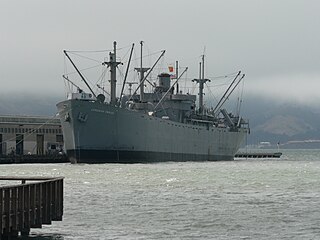 W
WSS Jeremiah O'Brien is a Liberty ship built during World War II and named after the American Revolutionary War ship captain Jeremiah O'Brien (1744–1818).
 W
WUSS Lucid (AM-458/MSO-458) is an Aggressive-class minesweeper acquired by the U.S. Navy for the task of removing naval mines that had been placed in the water to prevent the safe passage of ships. She was launched soon after the Korean War, sailed on five Western Pacific (Westpac) cruises and served four tours in Vietnam during the Vietnam War. Lucid was decommissioned at the end of 1970 and placed in mothballs after only 15 years of service, as the Vietnam War was winding down and there was no longer a need for a large fleet of minesweepers. She was purchased by civilians and served as a houseboat for ten years, before being sold again in 1986 and used as a warehouse by a scrap metal dealer on Bradford Island, in the Sacramento–San Joaquin River Delta. The scrap metal dealer was murdered in 2004 over a property dispute, and in 2005, Lucid was acquired by a foundation seeking to save a ship of its class. In 2011, the ship was moved to the Stockton Maritime Museum to be restored for use as a museum ship. Lucid is the last Aggressive-class minesweeper afloat in the United States.
 W
WThe March Field Air Museum is an aviation museum near Moreno Valley and Riverside, California, adjacent to March Air Reserve Base.
 W
WThe MCRD San Diego Command Museum is located in Day Hall, Building 26, Marine Corps Recruit Depot San Diego, San Diego, California. It exhibits historical items relating to the United States Marine Corps. The museum opened on November 10, 1987 and was officially designated as a command museum on January 8, 1993.
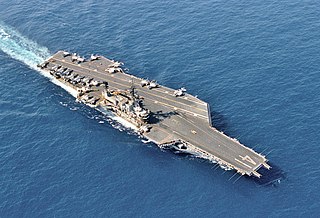 W
WUSS Midway (CVB/CVA/CV-41) is an aircraft carrier, formerly of the United States Navy, the lead ship of her class. Commissioned a week after the end of World War II, Midway was the largest ship in the world until 1955, as well as the first U.S. aircraft carrier too big to transit the Panama Canal. She operated for 47 years, during which time she saw action in the Vietnam War and served as the Persian Gulf flagship in 1991's Operation Desert Storm. Decommissioned in 1992, she is now a museum ship at the USS Midway Museum, in San Diego, California, and is the only remaining inactive U.S. aircraft carrier that is not an Essex-class aircraft carrier.
 W
WThe Naval Museum of Armament & Technology (NMAT) preserves and interprets the history of Naval Air Weapons Station China Lake and its heritage of advancing Naval aviation armament and technology. This museum is the repository of artifacts, photographs and film, documents and related heritage memorabilia from China Lake. The museum is dedicated to those who have employed their talents in advancing Naval aviation research, development, testing and evaluation, as well as the history of the Secret City.
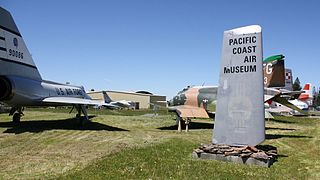 W
WThe Pacific Coast Air Museum, in Santa Rosa, California, is a non-profit organization dedicated to promoting and preserving aviation history through the acquisition, restoration, and display of historic aircraft. The museum displays a varied collection of over 30 American military, propeller, and jet aircraft.
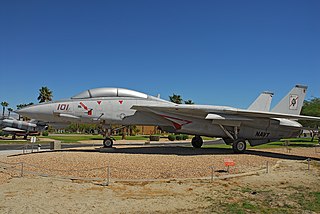 W
WThe Palm Springs Air Museum (PSAM), is a non-profit educational institution in Palm Springs, Riverside County, California. The Museum's mission is to exhibit, educate and eternalize the role of the World War II combat aircraft and the role the pilots and American citizens had in winning the war. In addition to flying aircraft, related artifacts, artwork, and library sources are used to perpetuate American history. It contains one of the world's largest collections of flying World War II warplanes, many of which were built in Southern California. Many of these aircraft have been used by motion picture companies in movies set during the second world war.
 W
WUSS Pampanito (SS-383/AGSS-383), a Balao-class submarine, was a United States Navy ship, the third one named for the pompano fish. She completed six war patrols from 1944 to 1945 and served as a Naval Reserve Training ship from 1960 to 1971. She is now a National Historic Landmark, preserved as a memorial and museum ship in the San Francisco Maritime National Park Association located at Fisherman's Wharf.
 W
WThe Presidio of San Francisco is a park and former U.S. Army military fort on the northern tip of the San Francisco Peninsula in San Francisco, California, and is part of the Golden Gate National Recreation Area.
 W
WSS Red Oak Victory is a U.S. military Victory ship of the Boulder Victory-class cargo ship used in the Second World War. She was preserved to serve as a museum ship in Richmond, California, and is part of the Rosie the Riveter/World War II Home Front National Historical Park. She was one of 534 Victories built during World War II, but one of only a few of these ships to be transferred from the Merchant Marine to the United States Navy. She was named after Red Oak, Iowa, which suffered a disproportionate number of casualties in early World War II battles.. The ship was active during World War II, the Korean War, and the Vietnam War.
 W
WSan Pasqual Battlefield State Historic Park honors the soldiers who fought in the 1846 Battle of San Pasqual, the bloodiest battle in California during the Mexican–American War. The battle was fought between United States troops under the command of General Stephen Kearny, and the Californio forces under the command of General Andres Pico on December 6, 1846.
 W
WSF-88 is a former Nike Missile launch site at Fort Barry, in the Marin Headlands to the north of San Francisco, California, United States. Opened in 1954, the site was intended to protect the population and military installations of the San Francisco Bay Area during the Cold War, specifically from attack by Soviet bomber aircraft.
 W
WThe Sonoma Barracks is a two-story, wide-balconied, adobe building facing the central plaza of the City of Sonoma, California. It was built by order of Lieutenant (Teniente) Mariano Guadalupe Vallejo to house the Mexican soldiers that had been transferred from the Presidio of San Francisco in 1835. The Presidio Company and their commander, Lieutenant Vallejo, were also responsible for controlling the Native Americans living on the northern border of Mexican California.
 W
WSutter's Fort was a 19th-century agricultural and trade colony in the Mexican Alta California province. The site of the fort was established in 1839 and originally called New Helvetia by its builder John Sutter, though construction of the fort proper wouldn't begin until 1841. The fort was the first non-Indigenous community in the California Central Valley. The fort is famous for its association with the Donner Party, the California Gold Rush, and the formation of the city of Sacramento, surrounding the fort. It is notable for its proximity to the end of the California Trail and Siskiyou Trails, which it served as a waystation.
 W
WThe Travis Air Force Base Heritage Center, founded as the Travis Air Museum and later known as the Jimmy Doolittle Air & Space Museum, is an aviation museum located at Travis Air Force Base in Fairfield, California. The museum houses 35+ aircraft displays and various other informative artifacts.
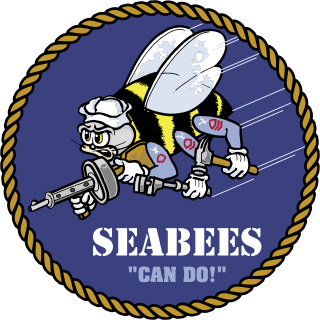 W
WUnited States Naval Construction Battalions, better known as the Navy Seabees, form the U.S. Naval Construction Force (NCF). The Seabee nickname is a heterograph of the first letters "C B" from the words Construction Battalion. Depending upon how the word is used "Seabee" can refer to one of three things: all enlisted personnel in the USN's occupational field 7 (OF-7), all officers and enlisted assigned to the Naval Construction Force (NCF), or Construction Battalions. Seabees serve outside the NCF as well. During WWII they served in both the Naval Combat Demolition Units and the Underwater Demolition Teams (UDTs). In addition, they served as elements of Cubs, Lions, Acorns and the United States Marine Corps. They also provided the manpower for the top secret CWS Flame Tank Group. Today they have many special task assignments starting with Camp David and the Naval Support Unit at the Department of State. Seabees serve under both Commanders of the Naval Surface Forces Atlantic/Pacific fleets as well as on many base Public Works and USN diving commands.
 W
WThe USS Hornet Museum is a museum ship, located on the southernmost pier of the former Naval Air Station Alameda in Alameda, California, US.
 W
WThe USS Midway Museum is a historical naval aircraft carrier museum located in downtown San Diego, California at Navy Pier. The museum consists of the aircraft carrier Midway. The ship houses an extensive collection of aircraft, many of which were built in Southern California.
 W
WVandenberg Air Force Base is a United States Space Force Base located 9.2 miles (14.8 km) northwest of Lompoc, California. Established in 1941, Vandenberg Air Force Base is a space launch base, launching spacecraft from the Western Range and also performs missile testing. The United States Space Force's 30th Space Wing serves as the host wing for the base. In addition to its military space launch mission, Vandenberg Air Force Base also performs space launches for civil and commercial space entities, such as NASA.
 W
WThe Veterans Museum and Memorial Center is a museum located in historic Balboa Park of San Diego, California. Founded in 1989, it is dedicated to create, maintain, and operate an institution to honor and perpetuate the memories of all men and women who have served in the Armed Forces of the United States of America. The museum currently resides in the former Chapel of the Old Balboa Naval Hospital.
 W
WThe Wende Museum of the Cold War is an art museum, historical archive, and educational institution in Culver City, California. It was founded in 2002 by Justinian Jampol, a native of Los Angeles and scholar of modern European history. The museum was housed for more than a decade in an office park before moving in November 2017 to its current campus, a former National Guard Armory Building.
 W
WThe Yanks Air Museum is a non-profit 501 (c)(3) organization and museum dedicated to exhibiting, preserving and restoring American aircraft and artifacts in order to show the evolution of American aviation, located at Chino Airport in Chino, California.